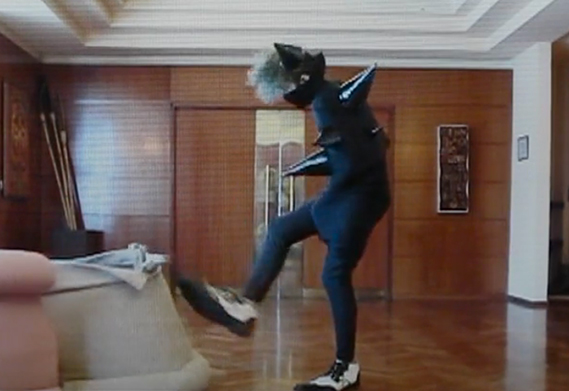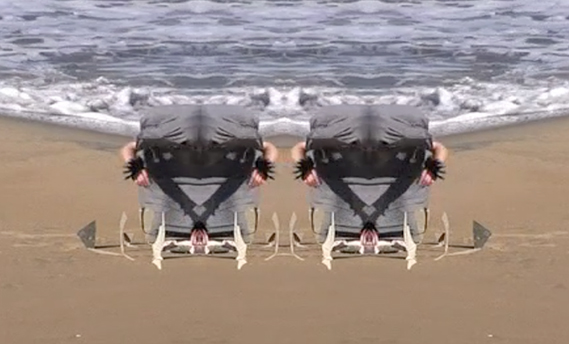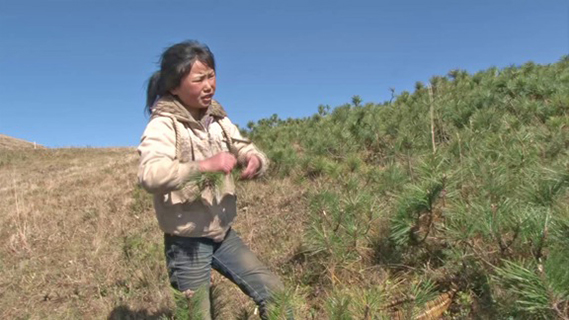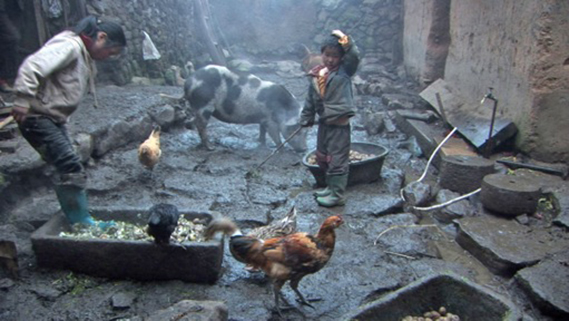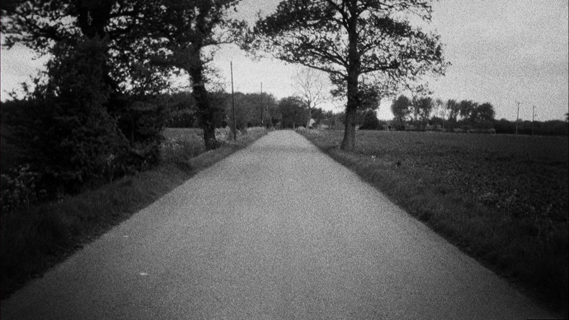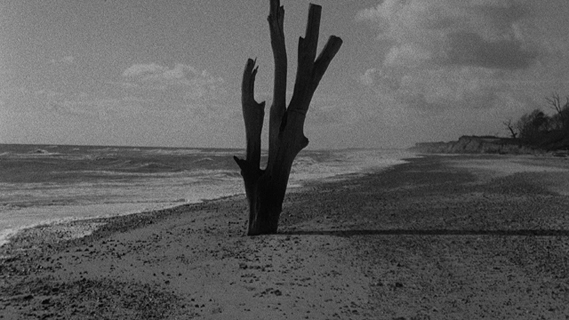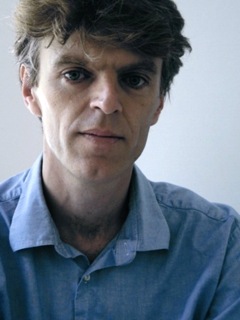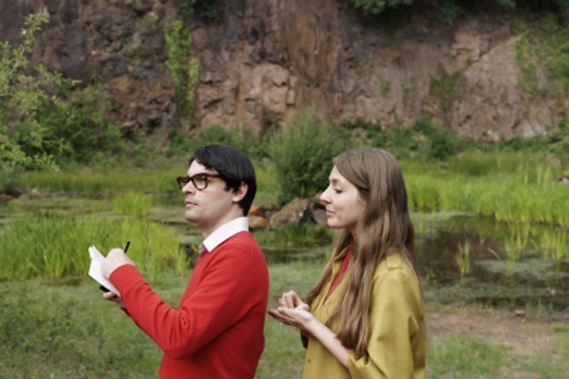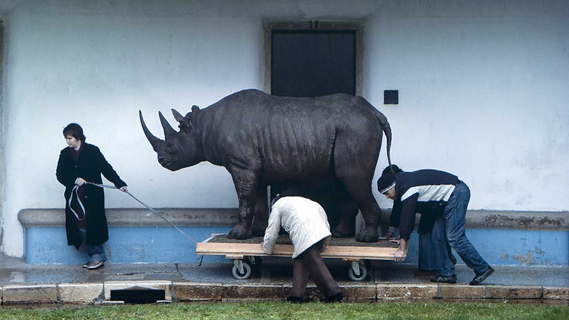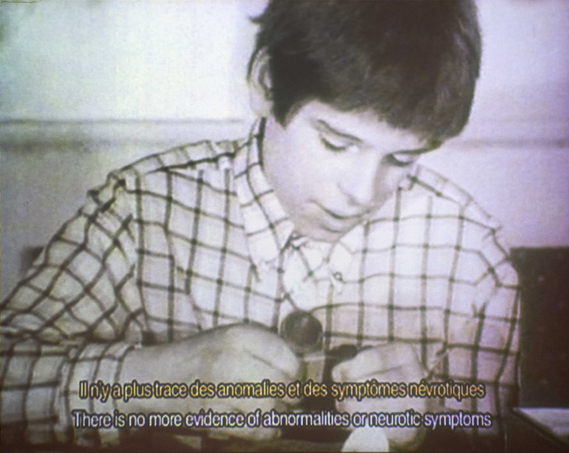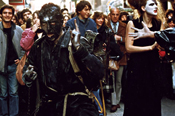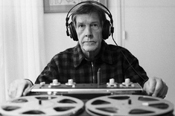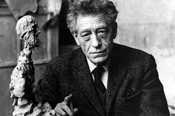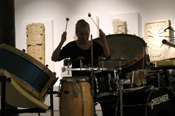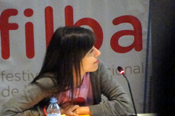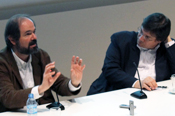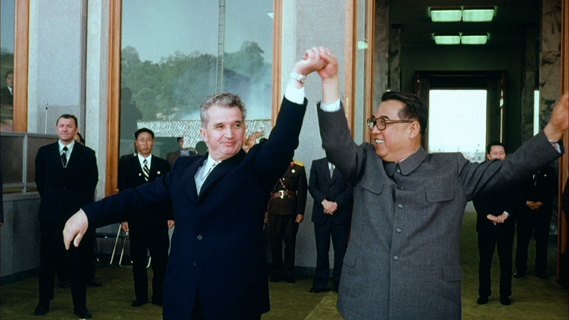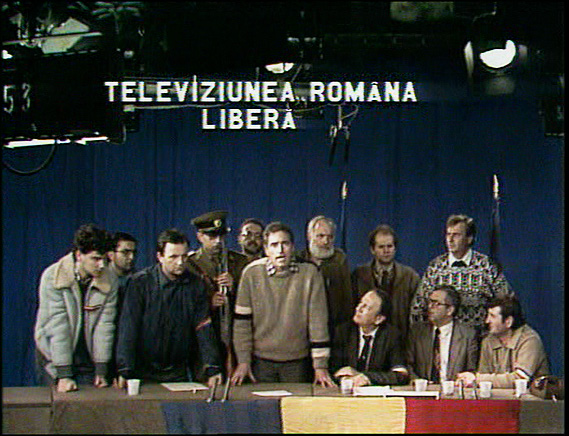During March, Proa’s Auditorium will be showing a series Harun Farocki’s films which, among others, will premiere in Argentina the filmmaker’s three latest realeses. Farocki’s work revolves around uncovering the ideological processes that the production and reception of images entail.
Furthermore, on Saturday 16 of March, Farocki himself will be at Proa’s Auditorium offering a public conference.
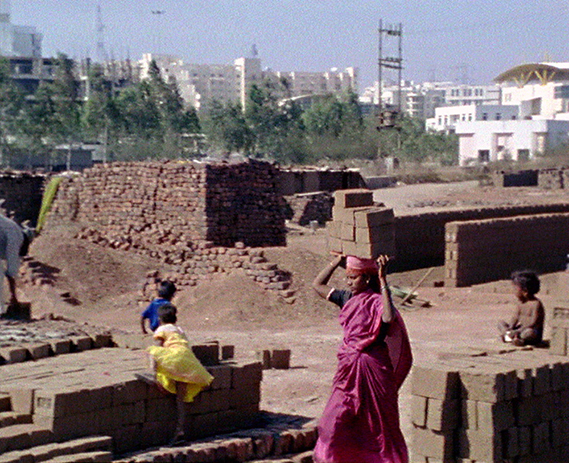
Harun Farocki. "In Comparison" (Zum Vergleich) 2009, 61 min.
FILMS
“Inextinguishable Fire” (Nicht löschbares Feuer)
1969, 25min., DVD
An Agitprop (agitation and propaganda) film belonging to protest movement against the Vietnam war. A treatise about the production of Napalm, about the division of labor and alienated conscience. Today it constitutes a document of 1968′s educational rigorism, but also of it’s capacity to clarify complex relationships so that, for many members of that generation, understanding and agitating became an indivisible unit.
“Images of the World and the Inscription of War” (Bilder der Welt und Inschrift des Krieges)
1988, 75min., DVD
A film about the authenticity of images and the possibility of their control. Where are the limits between images and realities? The director investigates the connections between inventions for civil society and their military use. The examples confirm Farocki’s thesis about correlations between industry, technique and armament.
“Videograms of a Revolution” (Videogramme einer Revolution)
de Andrej Ujica y Harun Farocki, 1992, 106 min., DVD
A film that shows the Rumanian revolution of December 1989 in Bucharest in a new media-based form of historiography. Demonstrators occupied the television station [in Bucharest] and broadcast continuously for 120 hours, thereby establishing the television studio as a new historical site. Between December 21, 1989 (the day of Ceaucescu’s last speech) and December 26, 1989 (the first televised summary of his trial), the cameras recorded events at the most important locations in Bucharest, almost without exception. The determining medium of an era has always marked history, quite unambiguously so in that of modern Europe. It was influenced by theater, from Shakespeare to Schiller, and later on by literature, until Tolstoy. As we know, the 20th century is filmic. But only the videocamera, with its heightened possibilities in terms of recording time and mobility, can bring the process of filming history to completion. Provided, of course, that there is history. (Andrei Ujica)
“Trabajadores saliendo de la fábrica” (Arbeiter verlassen die Fabrik)
1995, 36min., DVD
The first camera in movie history (directed by the Lumiére brothers) filmed a factory, but a hundred years laterit can be said the the factory rarely attracted film; it rather repelled it. Marilyn Monroe and Charlie Chaplin leaving a factory exemplify some of the concepts about work that cinema has produced throughout its history.
A film that dialogs with Farocki’s installation “Workers leaving the factory in eleven decades” (2006)
“War at a Distance” (Erkennen und verfolgen)
2003, 58min., DVD
In 1991, when images of the Gulf War flooded the international media, it was virtually impossible to distinguish between real pictures and those generated on computer. This loss of bearings was to change forever our way of deciphering what we see. The image is no longer used only as testimony, but also as an indispensable link in a process of production and destruction. This is the central premise of “War at a Distance”. With the help of archival and original material, Farocki sets out in effect to define the relationship between military strategy and industrial production and sheds light on how the technology of war finds applications in everyday life. (Antje Ehmann)
“Nothing Ventured” (Nicht ohne Risiko)
2004, 50min., DVD
What venture capital or VC for short actually means is explained the film itself. Banks only lend money against collateral. Those who have none have to turn to VC companies and pay interest of 40% at least. We had filmed scenes at a wide range of companies: VC companies discussing projects; entrepreneurs seeking to give shape to their ideas; consultants rehearsing their presentation. In the end we restricted ourselves to just one set of negotiations and used the material shot over two days. What tipped the balance for me was hearing the lawyer for NCTE, the company seeking capital say, “We are a little disappointed by the offer”. I felt myself transported into a Coen-Brothers film.The protagonists in our story film are sharp-witted and filled with a desire to present themselves. They are negotiating the conditions for the loan of 750,000 Euros. (Harun Farocki)
“Yella”
by Christian Petzold; scirpt collaboration: Harun Farocki. 2007, 88 min., DVD
Yella decides to leave. She longs for the future. Her previous existence must remain in the past. In this journey she meets a man from the finance world that works with high risk capitals. She plays a good role s her assistant, but elements of her past constantly make their way into her new life.
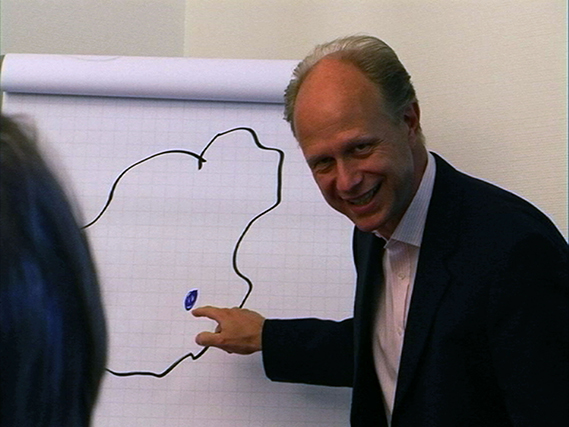
Harun Farocki. "A new product" (Ein neues Produkt) 2012, 37 min
PREMIERES
“Respite” (Aufschub)
2007, 40 min.
In “Respite”, Farocki presents the filmic record of Rudolf Breslauer, photographer and prisoner of the transit camp for jews in Westbork. After studying the latter use of the images taken in concentration camps, Farocki decides to do a silent film, using only the original material, without adding to or cutting any of the original sequences.
“I wanted to present the material in such a way that it invited it’s own unique lecture” (Harun Farocki)
“In Comparison” (Zum Vergleich)
2009, 61 min.
Bricks are the resonating fundamentals of society. Bricks are layers of clay that sound, like records just simply too thick. Like records they appear in series, but every brick is slightly different – not just another brick in the wall. Bricks create spaces, organize social relations and store knowledge on social structures. They resonate in a way that tells us if they are good enough or not. Bricks form the fundamental sound of our societies, but we haven?t learned to listen to them. Through different traditions of brick production Farocki’s film has our eyes and ears consider them in comparison – and not in competition, not as clash of cultures. Farocki shows us various brick production sites in their colours, movements and sounds. Brick burning, brick carrying, brick laying, bricks on bricks, no off-commentary. 20 inter-titles in 60 minutes tell us something about the temporality of working processes. The film shows us that certain production modes require their own duration and that cultures differentiate around the time of the brick.
<!– /* Font Definitions */ @font-face {font-family:Arial; panose-1:2 11 6 4 2 2 2 2 2 4; mso-font-charset:0; mso-generic-font-family:auto; mso-font-pitch:variable; mso-font-signature:3 0 0 0 1 0;} /* Style Definitions */ p.MsoNormal, li.MsoNormal, div.MsoNormal {mso-style-parent:”"; margin-top:0cm; margin-right:0cm; margin-bottom:0cm; margin-left:41.75pt; margin-bottom:.0001pt; mso-pagination:widow-orphan; font-size:12.0pt; font-family:”Times New Roman”; mso-ascii-font-family:Arial; mso-fareast-font-family:”Times New Roman”; mso-hansi-font-family:Arial; mso-bidi-font-family:”Times New Roman”; letter-spacing:-.25pt; mso-fareast-language:EN-US;} @page Section1 {size:612.0pt 792.0pt; margin:70.85pt 3.0cm 70.85pt 3.0cm; mso-header-margin:36.0pt; mso-footer-margin:36.0pt; mso-paper-source:0;} div.Section1 {page:Section1;} –>
“A new prodcut” (Ein neues Produkt)
2012, 37 min.
In his last film, Farocki shows how corporations handle a positive discourse in a cynical way, that is, they use a rhetoric of which its void is not only evident but also part of its communication. One could think of a second degree cynicism that consists in having a cynical conduct with one’s own cynicism and derive from it a language capable of communicating that one trusts in it because one doesn’t trust in it, but knows that all the rest share that same distrust. It would be tempting to praise this as another case of communication’s -not necessarily conscious- social refinement, if it wasn’t for the fact that it leads those involved into an inevitable infantilism. (Dirk Baecker)
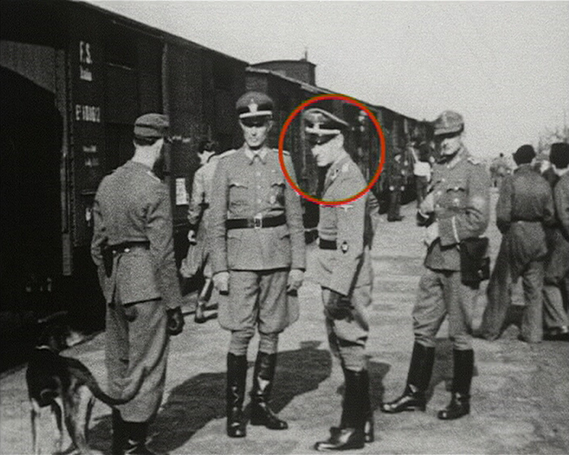
Harun Farocki. Harun Farocki. "Respite" (Aufschub) 2007, 40 min.
About the artist
Harun Farocki (Germany, 1944) is considered one of the most radical artists active today. His work revolves around an analysis of the audiovisual representations and images produced by contemporary society. In more than one hundred films, productions for television, videos, installations and essays, Farocki has attempted to reveal the forms of power involved in the production, register and consumption of images from the beginning of film history through video games and virtual reality.
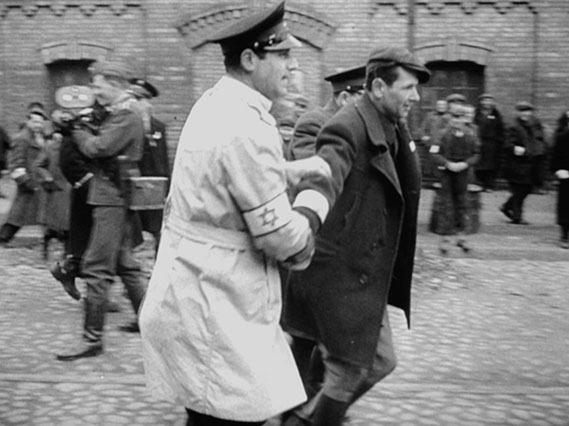 Por primera vez en Argentina, Proa Cine presenta A Film Unfinished, un documental de la directora israelí Yael Hersonski que, a partir del hallazgo de filmaciones inéditas, documentos escritos y el testimonio de sobrevivientes, revela la verdadera historia detrás de uno de los pocos registros fílmicos que existen sobre el Gueto de Varsovia.
Por primera vez en Argentina, Proa Cine presenta A Film Unfinished, un documental de la directora israelí Yael Hersonski que, a partir del hallazgo de filmaciones inéditas, documentos escritos y el testimonio de sobrevivientes, revela la verdadera historia detrás de uno de los pocos registros fílmicos que existen sobre el Gueto de Varsovia.